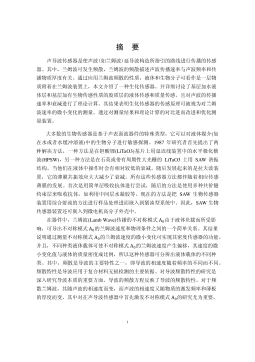液氮辅助制冷冻干机冷阱模拟分析及
摘要液氮辅助冻干机,以液氮作为冷源,通过液氮在换热器中膨胀相变吸热的制冷方式,解决了常规压缩机制冷冻干机存在的降温速率较慢、冷阱极限温度不够低等问题。而冷阱是冻干机设备的重要组成部分,其结构设计也是难点。冷阱通导能力的好坏,冷阱内空间温度场的分布,直接影响水蒸气与冷阱盘管表面的碰撞几率,影响捕水效率。随着CFD技术的不断发展,其在流体内部温度场,流场的分布分析等应用日益广泛。在进行冻干机冷阱设计过程中,若缺乏对冷阱室内气流组织的研究,很可能设计出来的冷阱结构庞大,造价高,结构不合理,造成水汽凝结器结霜不均,冷阱捕水能力下降。因此,本文通过采用Fluent模拟软件,对液氮辅助冷冻干燥机冷阱内部温...
相关推荐
-
10KV电网D-SCADA 系统信息采集与故障诊断研究与设计VIP免费

 2024-10-14 53
2024-10-14 53 -
方形吸顶散流器平送风等温射流特性研究VIP免费

 2025-01-09 13
2025-01-09 13 -
关于充液声导波传感器中频散兰姆波的研究VIP免费

 2025-01-09 22
2025-01-09 22 -
结合梁斜拉桥施工过程中考虑剪力滞影响的分析方法VIP免费

 2025-01-09 30
2025-01-09 30 -
空调房间热舒适性的数值模拟与实验研究VIP免费

 2025-01-09 11
2025-01-09 11 -
汽车前轮线控转向系统研究VIP免费

 2025-01-09 20
2025-01-09 20 -
输入分配型混合动力车辆动力系统控制策略研究VIP免费

 2025-01-09 9
2025-01-09 9 -
双馈风力发电系统的柔性并网控制研VIP免费

 2025-01-09 38
2025-01-09 38 -
污水处理厂污泥好氧堆肥发酵技术的试验研究VIP免费

 2025-01-09 11
2025-01-09 11 -
应用风室试验装置的风机性能VIP免费

 2025-01-09 13
2025-01-09 13
相关内容
-

汽车前轮线控转向系统研究
分类:高等教育资料
时间:2025-01-09
标签:无
格式:PDF
价格:15 积分
-

输入分配型混合动力车辆动力系统控制策略研究
分类:高等教育资料
时间:2025-01-09
标签:无
格式:PDF
价格:15 积分
-

双馈风力发电系统的柔性并网控制研
分类:高等教育资料
时间:2025-01-09
标签:无
格式:PDF
价格:15 积分
-

污水处理厂污泥好氧堆肥发酵技术的试验研究
分类:高等教育资料
时间:2025-01-09
标签:无
格式:PDF
价格:15 积分
-

应用风室试验装置的风机性能
分类:高等教育资料
时间:2025-01-09
标签:无
格式:PDF
价格:15 积分






